Accessing and Working Isle Royale’s Lookout Louise
No Comments
Carolyn and Rolf Peterson, who together have raised a family on remote Isle Royale, lamented that Ken Burns didn’t roam the national park, but instead just zeroed in on a single overlook. Which one did he choose? Lookout Louise.
Expansive elevated views do not come easily on Isle Royale because of a combination of gentle peaks and dense forest cover. The position near the tip of the island atop a cliff sets apart Lookout Louise from the few other high points available along the Greenstone Ridge Trail, which forms the backbone of Isle Royale. On previous trips, I had hiked a large part of the 40-mile trail, however, I had missed Lookout Louise, which forms its northeast terminus.
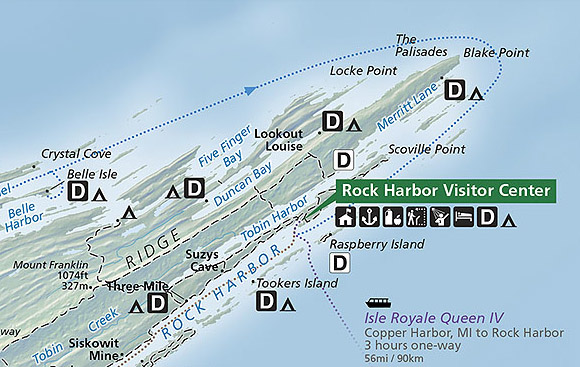
The reason becomes clear when you look at the map. If traveling on foot, you’d be coming from Mount Franklin, and then you’d have to backtrack for 5 miles along the section of the trail between Mount Frankin and Lookout Louise. Visiting as a day trip from Rock Harbor would entail a hike of almost 20 miles round-trip.
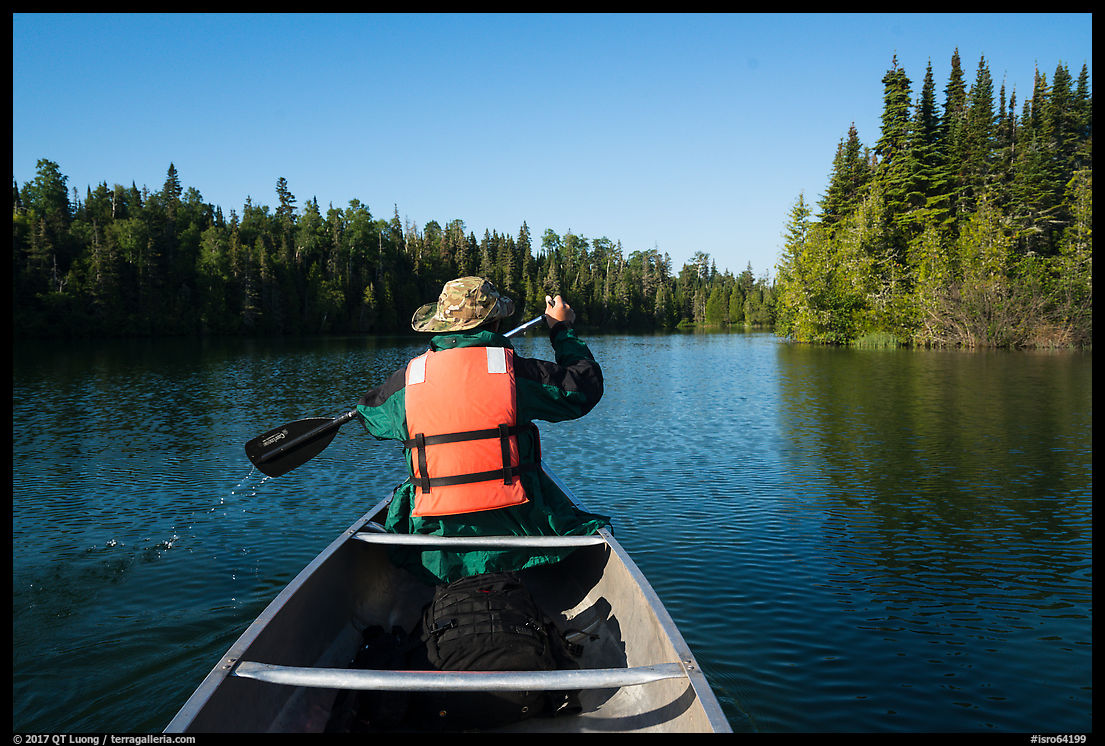
This landlubber eventually figured it out that crossing the waters of Tobin Harbor makes Lookout Louise a quick outing from Rock Harbor. The distance on water from Rock Harbor to the Hidden Lake dock is about a mile and it took us 20 minutes to paddle a canoe.
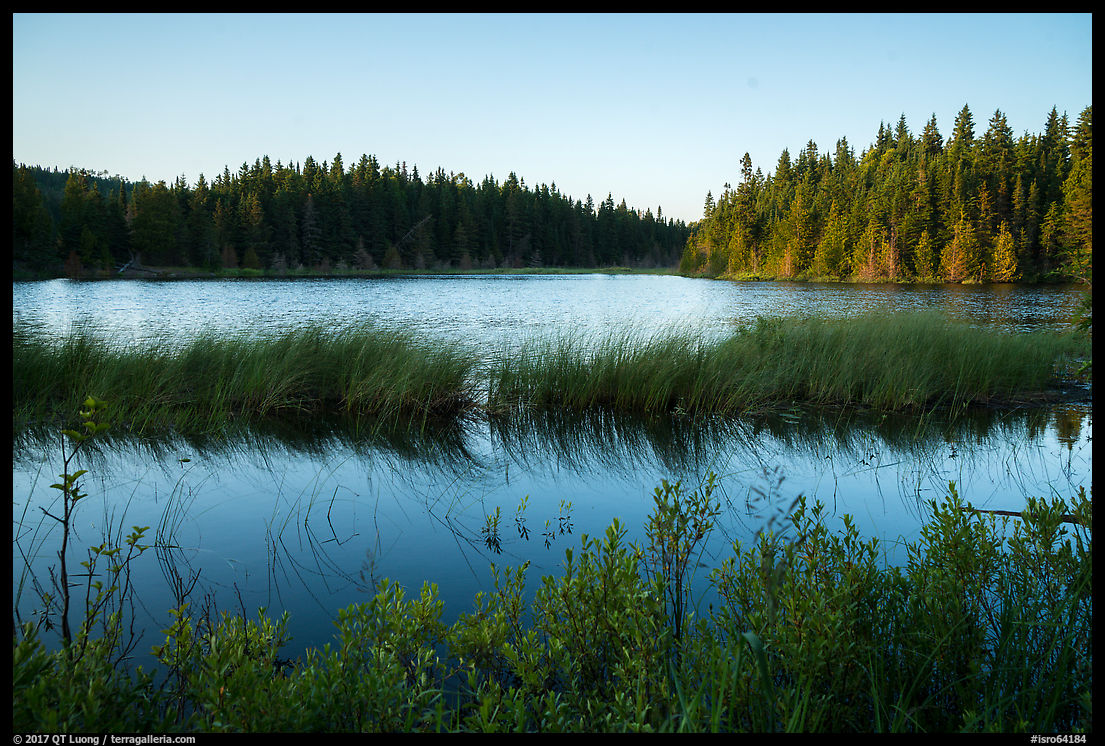
After skirting Hidden Lake (a moose habitat), the trail gains 300 feet elevation within a lush forest, and you reach Lookout Louise a mere 0.6 miles from the dock. During the summer season, you can rent canoes and kayaks at the Rock Harbor Marina, and they are conveniently stored on Tobin Harbor. The outfitter provides canoes without even a single line, but I had brought an utility cord, so we were able to tie the canoe to the dock. On some days, it is possible to visit Lookout Louise on a guided trip with the MV Sandy tour boat, but you’d be standing at Lookout Louise at midday.
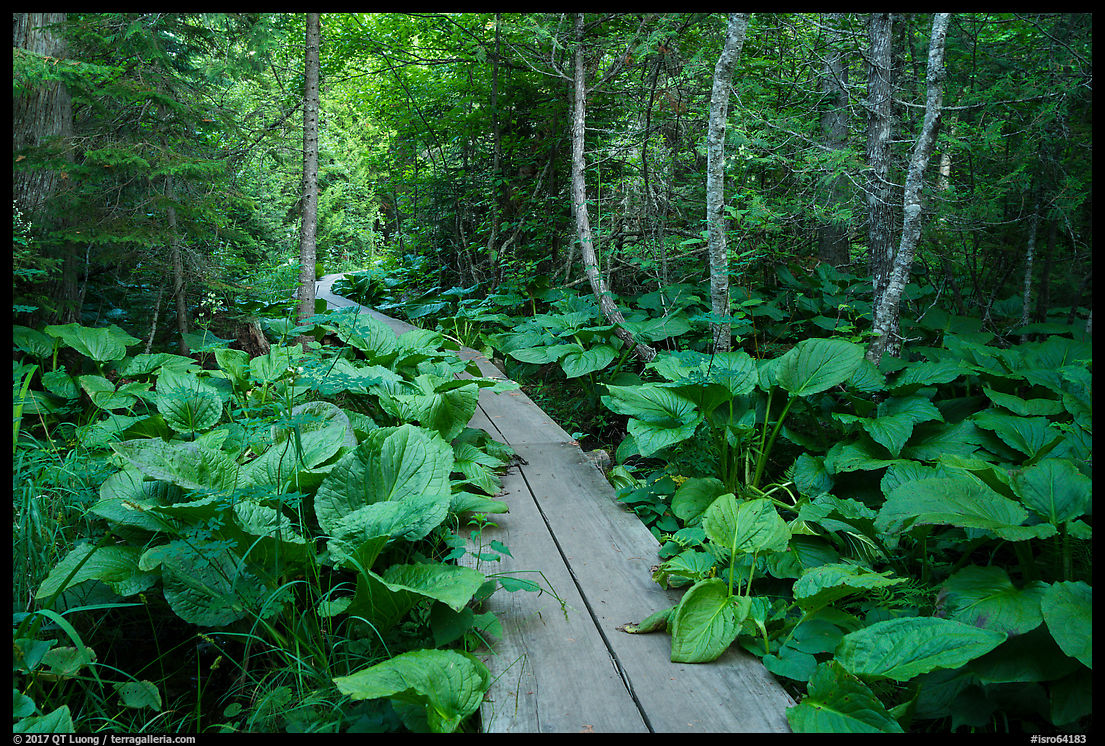
The views from Lookout Louise range from west to northeast, and I had to “work” that overlook. When I arrived there in the late afternoon, at first I saw only one opening between the trees towards the west facing Duncan Bay and Five Finger Bay. I normally try wide views before looking for details. However, 3 hours before sunset, the view was strongly backlit, to the point where a good photograph didn’t seem possible. Given the difficult light and the limited size of the opening, I reached for my telephoto lens, looking to isolate a graphic image.
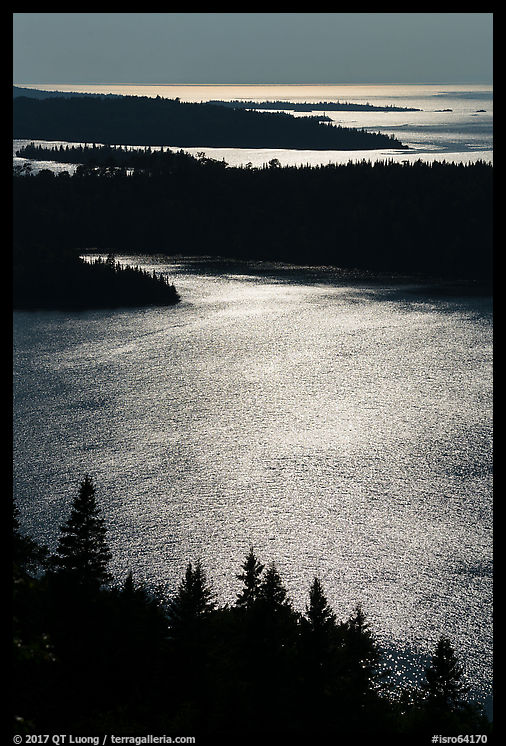
Shooting right towards the sun to make the most out of the backlight, I liked the high-contrast silhouettes of the multiple tree-covered ridges against the texture created by shimmer of the water. Pointing the camera just a bit more towards the west yielded a more hazy effect, with the texture of the forest barely visible.
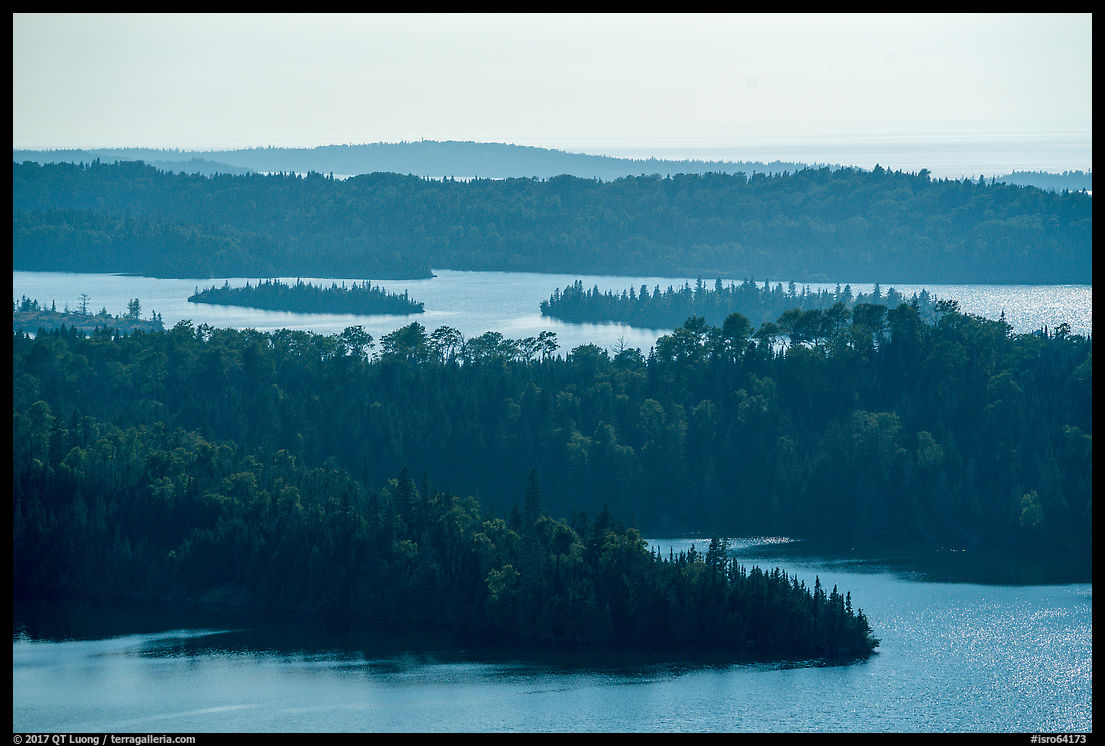
One hour later, the sun had moved and the shimmer left the area where the ridges had the richest shapes. However, I noticed that I could now create a symmetrical wide-angle image. The trees would contribute rather than distract. I centered the sun and stopped down the lens to f/22 to create a sun star. The tree in the middle was aligned with precision to tame the brightest areas of the water. While the image below is a HDR blend, almost the same result could have been obtained with a single frame from the Sony A7R2 with its great dynamic range.
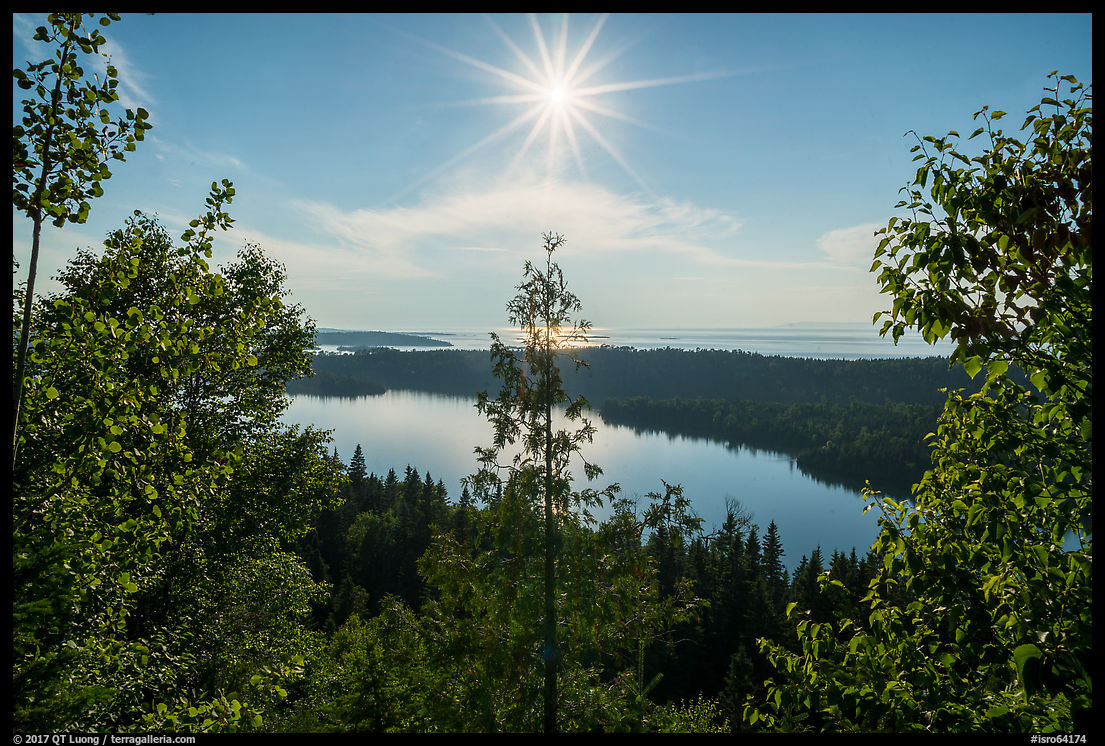
Shooting towards the northeast and the tip of the island (Locke Point), the side lighting in the late afternoon delineated the forest beautifully, however, finding a satisfying composition proved tricky, as trees were obscuring views. By bushwalking a few yards off-trail to the edge of a cliff, I found an open viewpoint, and tried to balance the composition by including a foreground tree.
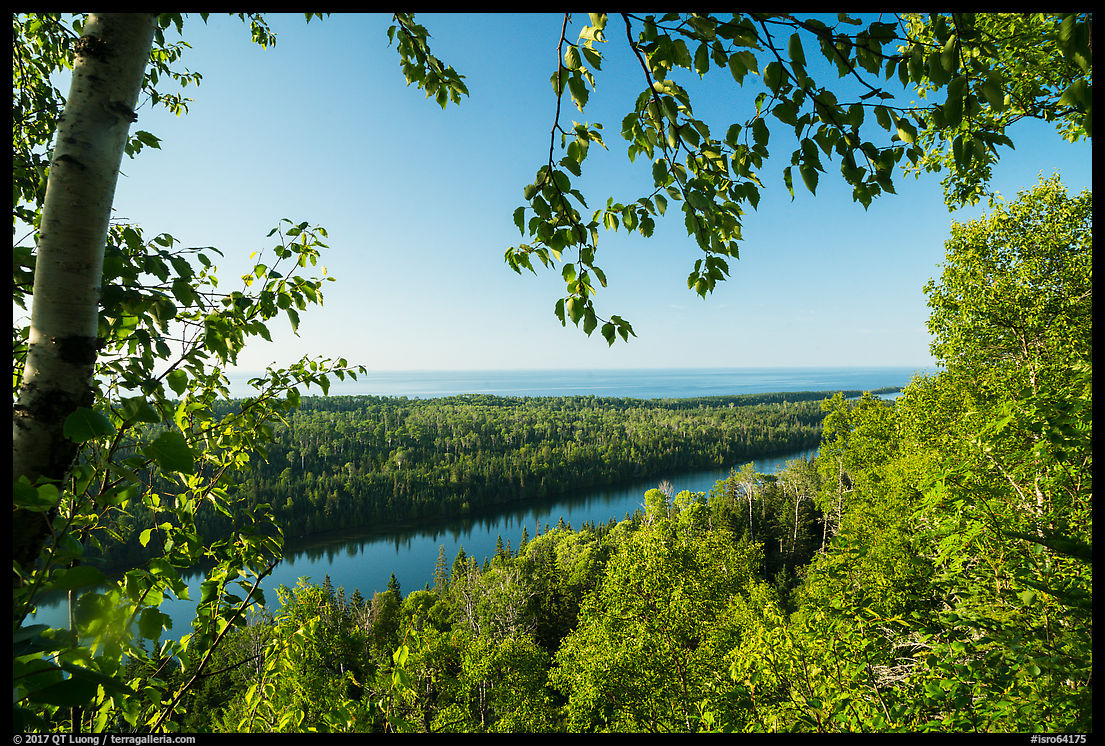
However, I was not pleased that the tip of the island was hidden by a ridge of trees, which may seem unimportant until you realize that the eye naturally converges towards that point. After another half-an-hour of stepping through bushes, I eventually found the viewpoint I was happy with, one that appeared in none of the photos I’d seen from Lookout Louise. Locke Point was now well separated. Small detail, big difference as far as I am concerned. I was glad that I kept looking.
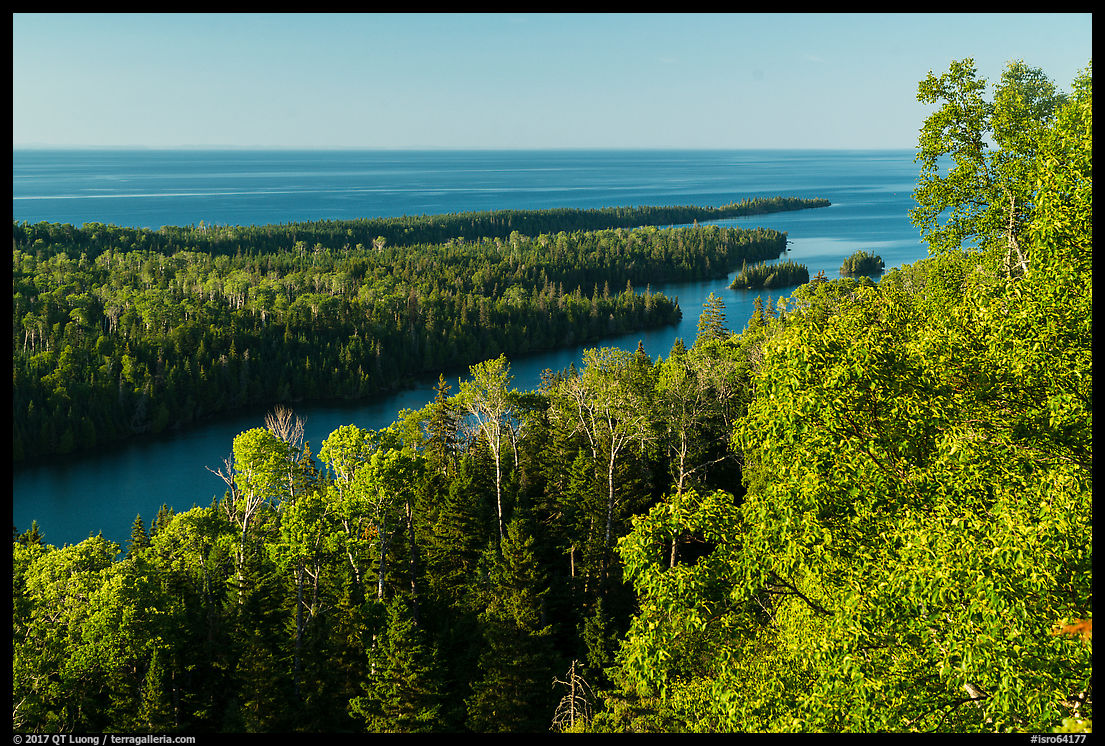
After making the previous photograph, instead of waiting for the sun to get lower, I thought I’d have enough time do a quick roundtrip to the dock to get my panoramic head that I left in the boat. On my way down, I was elated to spot a moose walking on the Greenstone Ridge Trail. It was thanks to the late hour, as they don’t like to come out during the day, and to shoot at 300mm handheld with a shutter speed of 1/320s, I increased ISO to 3200. Isle Royale is famous for its population of wolves and moose. With just two left, you’d expect the former to be elusive, but even though there are more than 1,500 moose, there are not that easy to spot. On my previous two trips, I was unable to photograph one, so I found it well worth missing the sunset to be able to stalk the magnificent animal!
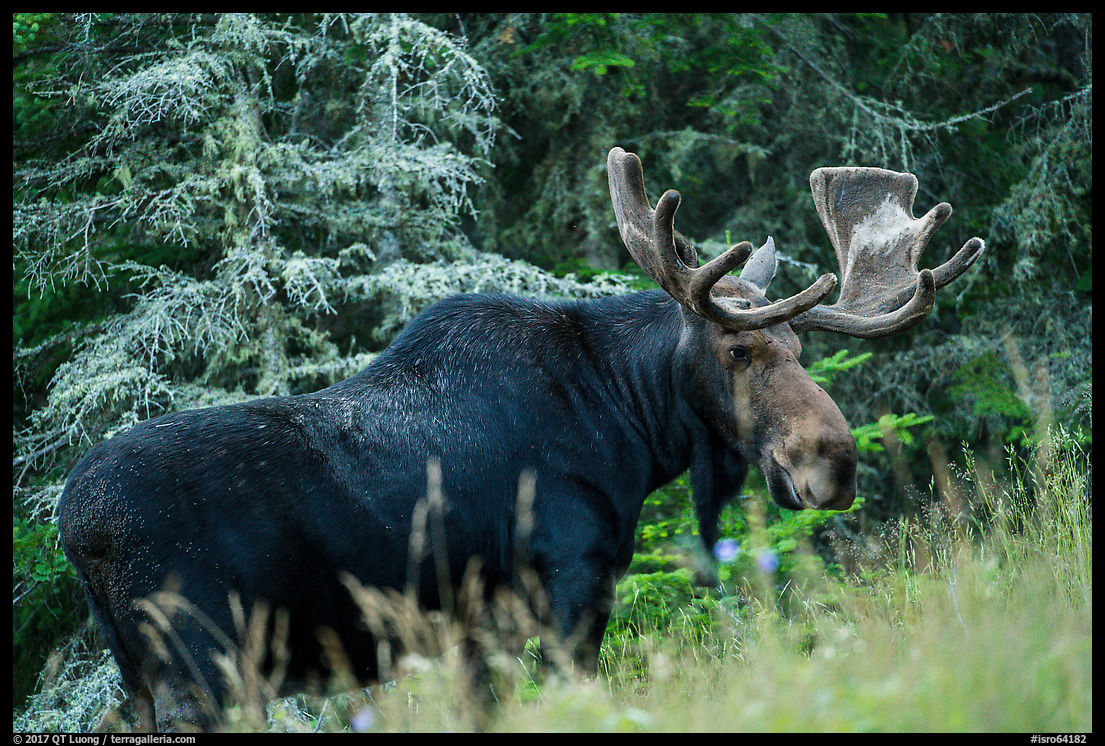
Back from Lookout Louise, paddling the glassy waters in semi-darkness was a delightful and serene experience. We’ve been told that the coast guard doesn’t want people to canoe at night, and happened to reached the dock just in time before nightfall.
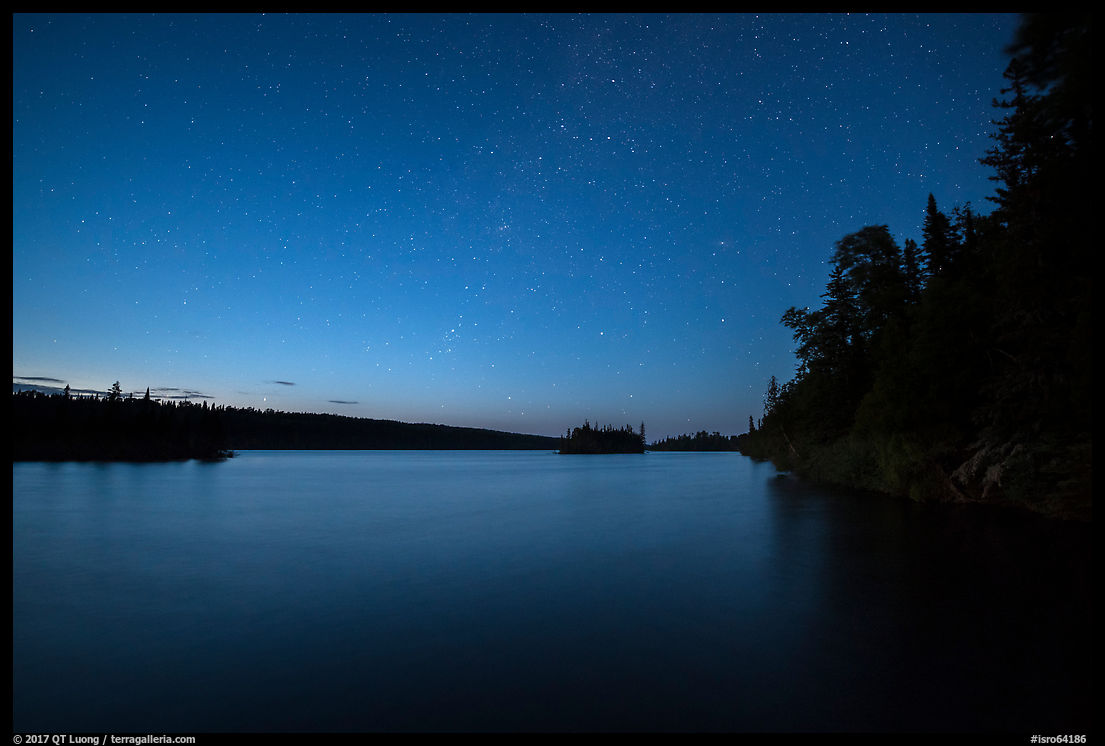
More images of Isle Royale National Park

